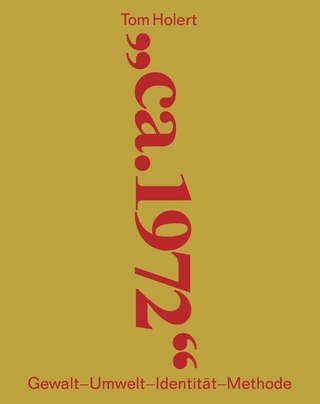
White Mineworkers on Zambia's Copperbelt, 1926-1974
Brill (Verlag)
978-90-04-46733-0 (ISBN)
Life and work on the Zambian Copperbelt – a concentrated industrialised mining region along the border with DR Congo – has been a perennial subject for Africanist historians. In this book, Duncan Money for the first time focusses on the white mineworkers who monopolised skilled jobs on the mines from the 1920s to the 1960s and became one of the most affluent groups of workers on the planet. Money argues that this group was a highly mobile global workforce which constituted, and saw itself as, a racialised working class. For much of the twentieth century, this white working class moved between mining and industrial centres across and beyond the British Empire and their actions and forms of organisation were strongly influenced by their international connections and by their mobility. These transnational connections, and the white working-class militancy they produced, played a crucial role in shaping social categories of race and class on the Copperbelt and determining the evolution of a region which quickly became one of the world’s largest sources of copper.
See inside the book.
Duncan Money, DPhil. (2016), University of Oxford, is a historian and works at the African Studies Centre Leiden. He has published widely on the mining industry, labour and race and is the co-editor of Rethinking White Societies in Southern Africa (Routledge, 2020).
Acknowledgements
Abbreviations
List of Illustrations
Introduction: The World of White Labour
1 Beginnings of Industrial Mining
2 The Copperbelt in Labour History
3 The White Working Class on the Mines
4 Global Labour History and White Workers
5 Sources
6 Book Structure
7 Note on Terminology
1 Making Copper, Making the Copperbelt
1 Making Copper
2 The Workplace and the Workers
3 The Companies
4 The White Trade Unions
2 The Wild West in Central Africa, 1926–1939
1 Recruiting the White Workforce
2 Violence and Danger on the Job
3 Life in the Mining Camps
4 The Great Depression
5 The Self-Identity of White Workers
6 Unionising the White Workforce
7 The Case of Tommy Graves
8 Conclusion
3 A Good War, 1940–47
1 Wildcat Strikes in 1940
2 Shifting the Racial Division of Labour
3 The Closed Shop and White Working-Class Identity
4 Strikes in Katanga and the Removal of Frank Maybank
5 Wartime Politics and the Labour Party
6 Wartime Working Conditions
7 Artisans, Mobility and Strikes
8 Return of Frank Maybank
9 New Management and the End of Hostilities
10 Conclusion
4 Fruits of their Labour, 1948–55
1 The High Cost of High Living
2 Mining Work and Masculinity
3 Housing and Households
4 Stabilisation Efforts and the White Workforce
5 Recruitment and Training of the White Workforce
6 Formation of the African Mine Workers Union
7 The Central African Federation and Disappearing White Radicalism
8 Relations between the Unions
9 African Advancement and the Racial Division of Labour
10 Conclusion
5 Trouble in Paradise, 1956–62
1 The Mining Workforce in the 1950s
2 Wildcat Strikes and the Rockbreakers’ Dispute
3 Notions of Skill and the Re-Organisation of Work
4 Inter-Racial Solidarity and the Liaison Committee
5 Defeat in the 1958 Strike
6 Exodus from the Mines and the Mobility of the White Workforce
7 Changes in the nrmwu and the End of Interracial Collaboration
8 African Nationalism and the Fleeting Defence of Colonialism
9 Conclusion
6 Surviving Independence, 1963–74
1 Independence for Zambia
2 Mufulira Timberman’s Strike
3 Life at Zambian Independence
4 Reinforcing Racial Divisions on the Mines
5 Restructuring the Mining Workforce
6 Strikes in 1966 and the Zambian State
7 Training, Upskilling and ‘advancement’ for White Workers
8 The Twilight of White Trade Unionism
9 Nationalisation of the Mining Industry
10 Slump in the Copper Industry
11 Conclusion
Conclusion
Appendix Statistical Profile of the Mining Workforce, 1931–1976
Bibliography
Index
| Erscheinungsdatum | 10.12.2021 |
|---|---|
| Reihe/Serie | Studies in Global Social History / Studies in the Social History of the Global South ; 44/1 |
| Verlagsort | Leiden |
| Sprache | englisch |
| Maße | 155 x 235 mm |
| Gewicht | 640 g |
| Themenwelt | Geschichte ► Allgemeine Geschichte ► Zeitgeschichte |
| Geschichte ► Teilgebiete der Geschichte ► Kulturgeschichte | |
| Sozialwissenschaften ► Ethnologie | |
| Sozialwissenschaften ► Soziologie | |
| Technik ► Bergbau | |
| ISBN-10 | 90-04-46733-5 / 9004467335 |
| ISBN-13 | 978-90-04-46733-0 / 9789004467330 |
| Zustand | Neuware |
| Haben Sie eine Frage zum Produkt? |
aus dem Bereich


